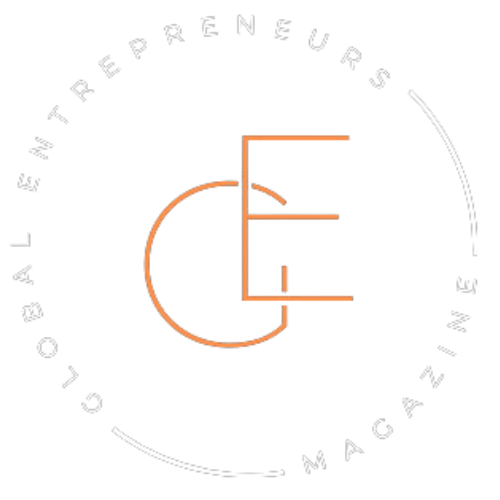There’s a moment few people see.
A founder walks out of a boardroom, having just closed a funding round that will take their startup global. The champagne hasn’t been poured yet. Instead, they’re in the backseat of a rideshare, scanning emails on the way to a community shelter where they’ve personally funded a new food distribution program. No press release. No LinkedIn post. Just the next commitment on a long list of things that matter.
This isn’t multitasking. It’s something else entirely.
For visionaries who care about both growth and giving, the balancing act isn’t a marketing strategy or a brand value—it’s a way of being. One that demands sharp thinking and even sharper instincts. Profit is the fuel. Philanthropy is the fire. And the people walking this line every day know how easy it is to lose focus.
Some burn out. Some cave to pressure. But the ones who get it right? They build legacies that outlive their bottom line.
This is a look at how they do it—without the clichés, without the self-congratulatory gloss. Just real stories, real decisions, and the kind of clarity you only get when you’ve risked comfort for something bigger.
The myth of the selfless hero vs. the ruthless capitalist
The world likes extremes.
You’re either the heartless billionaire hoarding cash or the broke idealist giving everything away. Pick a side, right?
But the real ones—the ones quietly building something that feeds both a payroll and a purpose—don’t fit neatly into those boxes. They get side-eyed in investor meetings for donating too much. They get questioned by nonprofit peers for charging what they’re worth. And most of the time, they’re fine with that.
Take Hamdi Ulukaya, founder of Chobani. Immigrant. Billionaire. Factory owner. He didn’t start out trying to be anyone’s savior. He just wanted to make good yogurt and treat people right. So he hired refugees when no one else would. Shared ownership of his company with his employees. Funded school lunch programs on the side.
And kept building.
It wasn’t a pivot into philanthropy. It was how he chose to operate from day one.
That’s the thing about visionaries. They’re not playing a part. They’re refusing to split themselves in two. They won’t fake being “just business” in the boardroom, and they won’t pretend to be saints in the spotlight. They know they’re going to be misunderstood. But that’s never been the point.
They’re not here to impress everyone. They’re here to do both. And that alone makes them dangerous—to the old playbook, at least.
What drives them: it’s personal before it’s public
There’s always a backstory.
Maybe it was a childhood shaped by scarcity—a parent working double shifts, a refrigerator that hummed louder than it was full. Maybe it was a single moment: watching a mentor get laid off, or seeing a system fail someone they loved. Whatever it was, it lit a fuse.
That fuse doesn’t get mentioned in TED Talks. It rarely makes it into bios. But it shapes everything.
It’s why some founders refuse to outsource their customer support—because they know what it’s like to feel unseen. It’s why others build profit-sharing into their contracts from day one—because they remember being the intern doing unpaid overtime. It’s not a strategy. It’s memory turned into action.
These decisions don’t always make sense on paper. But they’re not made on paper. They’re made in the gut.
Visionaries don’t chase impact because it looks good. They do it because they can’t not. When the press fades, and the quarterly reports pile up, they still show up for the cause that made them care in the first place.
That’s what keeps them focused. Not noise. Not metrics. Just that original fire, still burning.
How they set the rules (when no one else is watching)
It’s easy to talk values when people are listening. Harder when they’re not.
The most telling choices happen behind closed doors—when the cameras are off, when there’s no PR win to be had, and the only thing on the line is who they are when no one’s clapping.
Like the founder who turned down a lucrative retail deal because the factory on the other end didn’t treat its workers right. No press release, no public outrage. Just a quiet decision that cost millions—and kept their conscience clean.
Or the startup lead who capped their own salary during a year of explosive growth so entry-level staff could get raises. No headlines. No trophy. Just payroll done right.
They don’t wait until they’ve “made it” to start giving back. They bake it in from the beginning. Not just in donations, but in structure—in who gets equity, in which vendors they work with, in how they treat interns and temp staff.
They write the rules early. Then they stick to them.
Even when it’s messy. Even when it’s expensive. Especially then.
Drawing a line between impact and distraction

Every good cause looks tempting at first.
When you’ve got money, attention, and a platform, people start knocking. Sponsor this event. Join this board. Speak at that summit. And it’s easy to say yes—because it feels good, and looks good, and isn’t technically “off-mission.”
But the ones who stay sharp know that not every good thing is their thing.
One founder we spoke to said no to a major education nonprofit’s collaboration. Not because they didn’t care about the cause—but because their focus was food insecurity. Dividing time and money would’ve felt noble. But it would’ve also watered down what they were building.
Saying no is part of the work.
It takes discipline to tune out the noise. It takes self-awareness to recognize when giving starts becoming performance. And it takes courage to walk away from applause when it pulls you off track.
Impact only works when it’s aligned with purpose. And purpose doesn’t need a megaphone. It needs consistency.
Money as a tool, not the destination
Some people chase money like it’s the prize. Visionaries treat it like it’s the wrench.
They don’t worship it. They work with it. Use it. Move it. Direct it. Strip away the shine, and it’s just a means to build something that lasts beyond them.
One founder joked that their bank account was just “circulation.” As fast as money came in, it went right back out—into better benefits, better sourcing, better programs for underserved communities. It wasn’t generosity. It was intention.
This mindset changes everything.
It changes how they fundraise—less about flash, more about fit. It changes how they spend—less about optics, more about ownership. And it changes how they define success. For them, profit isn’t the endgame. It’s the fuel to stay in the game.
They’re not hoarding. They’re building pipelines—for equity, access, change. The money moves, and so does the mission.
And when the mission is clear, money stops being a distraction. It becomes a driver.
When it gets messy — and they keep going anyway
There’s always a moment when it would be easier to quit.
Maybe the board pushes back on another “non-essential” donation. Maybe an investor threatens to walk because the numbers aren’t aggressive enough. Or maybe it’s more personal—a long night staring at spreadsheets, wondering if they’ve made everything harder than it needs to be.
This path doesn’t come with applause. Sometimes, it comes with isolation.
One founder shared how their leadership team nearly splintered over the decision to take on a risky but mission-aligned supplier. The safe play would’ve been to walk away. Instead, they stuck to their values—and spent weeks rebuilding trust inside the company.
Another one told us about scaling back expansion plans to keep funding a community health initiative. It cost them momentum. It also gave them peace.
The truth? Purpose gets messy.
Visionaries don’t avoid the mess. They move through it. They get criticized, misunderstood, second-guessed—and they keep showing up. Because the work is hard. And worth it.
Every time they choose mission over convenience, they sharpen their focus. And every time they stay in it, they remind everyone else what clarity looks like under pressure.
Lessons from the quiet giants
Not all visionaries go viral.
Some are running small businesses out of second-floor walkups. Some are bootstrapping nonprofits on the edge of town. You won’t find them on magazine covers. You probably won’t hear their names in keynote speeches. But they’re the ones proving—every day—that it’s possible to do good work and good business at the same time.
One bakery owner we met starts every morning at 4 a.m., not just to prep bread, but to prepare care packages for local shelters. No media. No marketing push. Just habit. Another runs a tutoring center that caps profits so they can keep rates affordable for low-income families. They’ve turned down buyouts, grant money, even partnerships—because none of it felt right.
They don’t call themselves philanthropists. They don’t lead with mission statements. They just make quiet decisions that ripple outward.
You can tell what matters to them by who benefits when their business grows.
And if you pay close attention, you’ll notice something else: they all make sacrifices. Time, comfort, praise. But what they gain—self-respect, clarity, purpose—you can’t fake that.
They’re proof that you don’t need a massive platform to make an impact. Just conviction. And the will to follow through.
The real bottom line
One founder put it like this: “I want my numbers to look good. But I want my legacy to feel right.”
That’s the quiet north star.
It’s easy to measure revenue. Harder to measure ripple effects. Yet the visionaries who walk this line—balancing profit with purpose—know exactly what they’re building. And it’s not just a company. It’s a standard.
They’re not perfect. They miss the mark sometimes. But they keep asking the right questions. Who benefits when we win? What are we compromising, and is it worth it? What story are we writing with the way we lead?
Those questions don’t get answered on spreadsheets. They get answered in boardrooms, classrooms, kitchens, warehouses—in the places where decisions get made and character shows up.
The ones who get it right don’t separate the mission from the model. They don’t treat generosity like a bonus feature. They make it the backbone.
And long after the quarterly numbers fade, the people they’ve helped—the systems they’ve changed, the lives they’ve touched—carry the story forward.
That’s the real bottom line.




